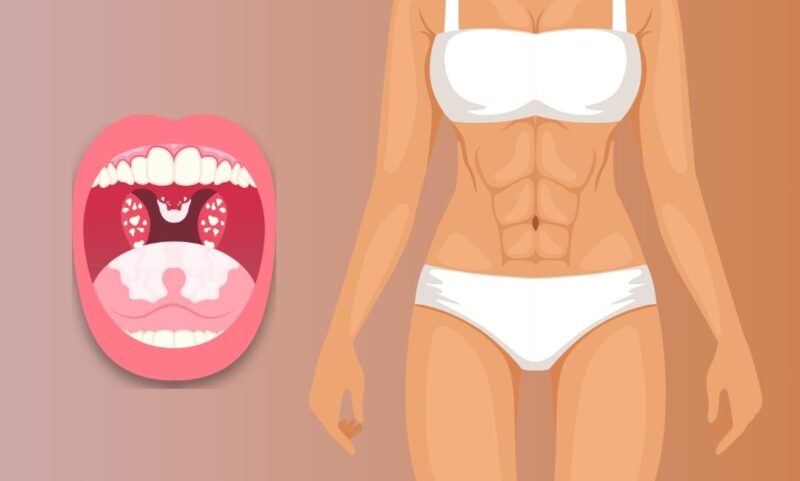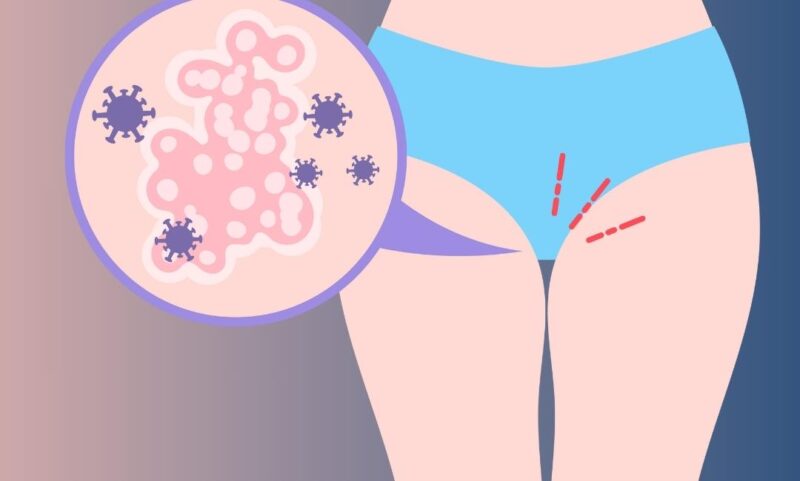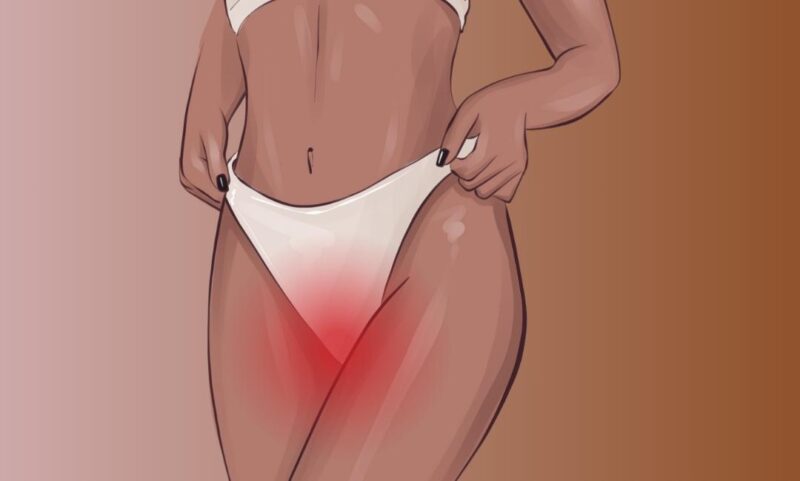Yeast infections, a commonly experienced and often misunderstood ailment, can cause significant distress. While it’s easy to be tempted by over-the-counter remedies that provide quick relief, it’s essential to understand why these may not always be the best solution. This article delves deep into the intricacies of yeast infections, how they manifest, and the pitfalls of relying solely on symptom-relief treatments.
What’s A Yeast Infection?
According to the Mayo Clinic, a yeast infection, also known as candidiasis, results from an overgrowth of the fungus Candida. While it’s normal for small amounts of this fungus to reside in the vagina, certain conditions can trigger its excessive growth, leading to an infection.
Almost every woman will experience one at some point in her life. This is primarily because every woman’s vagina houses yeast. Typically, good bacteria like lactobacillus maintain vaginal health by keeping yeast growth in check. However, factors such as a weakened immune system, antibiotic usage, excessive sugar consumption, or even hormonal imbalances can disrupt this equilibrium, paving the way for a yeast infection.
Symptoms often start subtly. It might begin as an unusual discharge or a mild itch. Many women make the mistake of self-diagnosing and then heading to the pharmacy for an over-the-counter solution. However, as we’ll discuss shortly, this might not always be the best course of action.
Why Over-the-counter Treatments Aren’t Always The Answer
Over-the-counter treatments provide temporary relief. As highlighted by the anecdote earlier, many women turn to symptom-relief creams when they suspect a yeast infection. These products, while alleviating discomfort momentarily, often don’t address the root cause.
According to the U.S. National Library of Medicine, while anti-itch creams might offer momentary respite, they don’t target the underlying fungal overgrowth. This can lead to the worsening of the infection over time, as the yeast continues to thrive and multiply, unchecked by any curative treatment.
Misdiagnosis is another concern. Not all vaginal infections are yeast infections. According to the Centers for Disease Control and Prevention (CDC), symptoms of bacterial vaginosis or other vaginal infections can sometimes mimic those of a yeast infection. Using over-the-counter treatments based on a self-diagnosis can, therefore, prove ineffective or even detrimental.
The Right Way To Address A Yeast Infection

Understanding the Root Cause
It’s crucial to address the root cause of a yeast infection rather than just the symptoms.
According to the American College of Obstetricians and Gynecologists (ACOG), determining the type of vaginal infection is the first step. This typically involves a medical examination and possibly lab tests. Once a yeast infection is confirmed, appropriate treatment can be determined.
Effective Treatment Options
- Antifungal medications: As per WebMD, antifungal medications, available both over-the-counter and by prescription, are effective in treating yeast infections. These come in various forms, including creams, ointments, tablets, and suppositories.
- Lifestyle changes: Consuming a balanced diet, wearing breathable underwear, and avoiding douches can help maintain the delicate balance of good bacteria in the vagina.
- Natural remedies: Some natural treatments, such as yogurt or tea tree oil, might offer relief. However, it’s essential to consult with a healthcare professional before trying any home remedies.
Prevention is Better than Cure
Finally, understanding and practicing preventive measures can significantly reduce the risk of recurrent yeast infections. This includes avoiding prolonged moisture near the genital area, avoiding irritating products, and seeking medical advice when on long-term antibiotics.
The Science Behind Yeast Infections

The Balancing Act of Our Bodies
Our bodies are a complex ecosystem, always striving to maintain balance. According to the World Health Organization (WHO), the human body contains trillions of microorganisms, many of which reside in the gut and reproductive areas. While some are pathogenic and can cause disease, many are beneficial and crucial for our well-being.
The Vaginal Microbiome: The vagina, in particular, houses a unique microbial community. This community consists of a delicate balance between beneficial bacteria, like lactobacilli, and other organisms, including the yeast Candida. When this balance is maintained, the vagina remains healthy.
Disturbances in the Force: However, any disturbance in this equilibrium, like antibiotic use or hormonal changes, can allow yeast to flourish, leading to the symptoms of a yeast infection.
Diet’s Role in Yeast Infections
The Sugar-Yeast Connection: The yeast Candida albicans thrives on sugar. A diet high in sugar can, therefore, exacerbate or even potentially trigger yeast infections. According to the Harvard School of Public Health, refined sugars and processed foods can increase inflammation, further impairing the immune system and making one more susceptible to infections, including those by yeast.
Probiotics and Prevention: Consuming foods rich in probiotics can potentially help maintain the balance of good bacteria in the vagina. Yogurt, for example, contains live cultures beneficial for gut and vaginal health.
Stress and Immunity
It’s well-documented that prolonged stress can weaken the immune system. According to the American Psychological Association (APA), chronic stress can dampen the body’s immune response, making it harder to fight off invaders, including the overgrowth of yeast. Finding effective ways to manage stress, like meditation or exercise, can not only improve mental well-being but also provide a boost to one’s immune health.
Dealing With Recurrent Yeast Infections

For some, yeast infections can be a recurring problem, causing distress and discomfort repeatedly. In such cases, it’s crucial to consult with a healthcare professional who can guide on long-term prevention strategies and possibly prescribe stronger antifungal medications.
According to the American Family Physician, some women may benefit from maintenance antifungal treatments, either oral or topical, to prevent recurrent infections. Furthermore, identifying and managing potential triggers, like certain medications or lifestyle factors, can be key in reducing recurrence.
Frequently Asked Questions (FAQs)
What causes a yeast infection?
Yeast infections are primarily caused by an overgrowth of the fungus Candida. Factors like antibiotic use, a weakened immune system, high sugar consumption, and hormonal changes can contribute to its growth.
Can men get yeast infections?
Yes. While less common than in women, men can get yeast infections, especially in the foreskin of an uncircumcised penis.
How can I differentiate between a yeast infection and an STD?
Some symptoms of yeast infections can mimic STDs. It’s vital to consult a healthcare professional for an accurate diagnosis.
Is it safe to have intercourse while having a yeast infection?
While it’s not unsafe, it can be uncomfortable and may worsen symptoms. There’s also a risk of transmitting the infection to your partner.
Can I get a yeast infection from my partner?
Yes, yeast infections can be sexually transmitted, although they’re not considered an STD.
Are yeast infections common during pregnancy?
Yes, hormonal changes during pregnancy can disrupt the balance of bacteria in the vagina, making yeast infections more common.
How long does it typically take to cure a yeast infection?
With the right treatment, most yeast infections clear up within one week. However, more severe cases might take longer.
Final Words
Yeast infections, while common, can cause significant discomfort and distress. It’s essential to approach them with a comprehensive understanding and not just seek temporary relief. Proper guidance, accurate diagnosis, and effective treatment are paramount in ensuring long-term relief and reducing recurrence. Remember, your well-being is of the utmost importance; always seek professional advice when in doubt.
